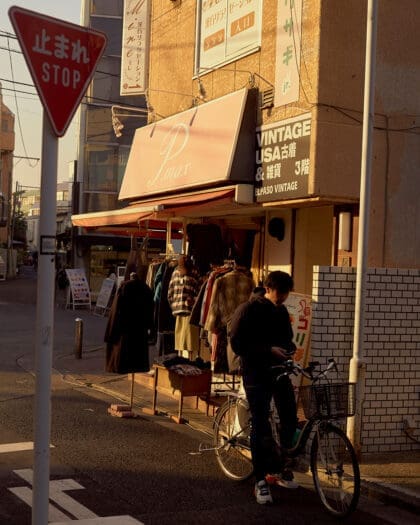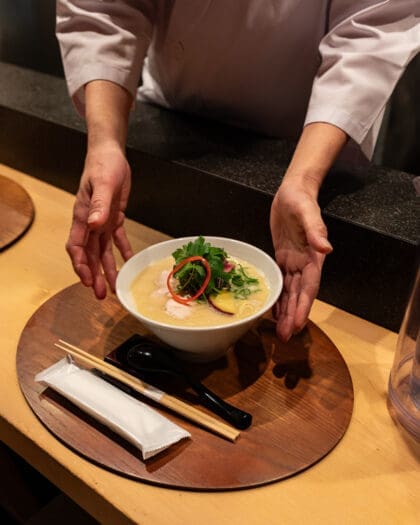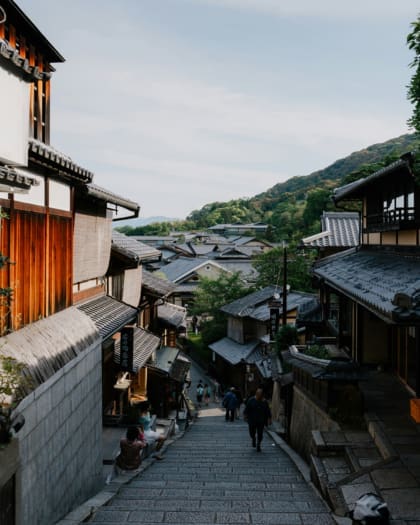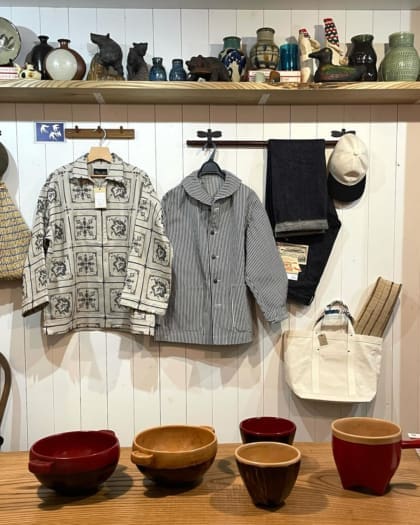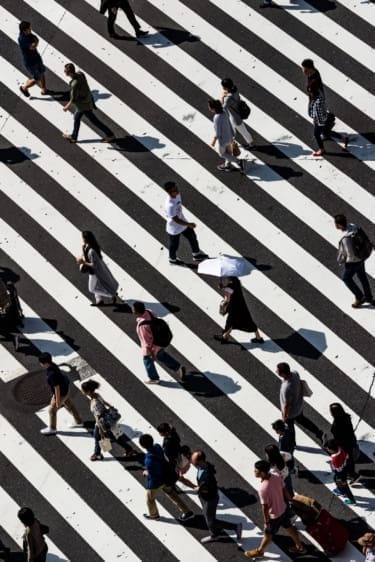A complete guide to Kyoto, Japan’s cultural heart
Our comprehensive guide to Kyoto covers the city’s top hotels, restaurants, bars and cultural attractions
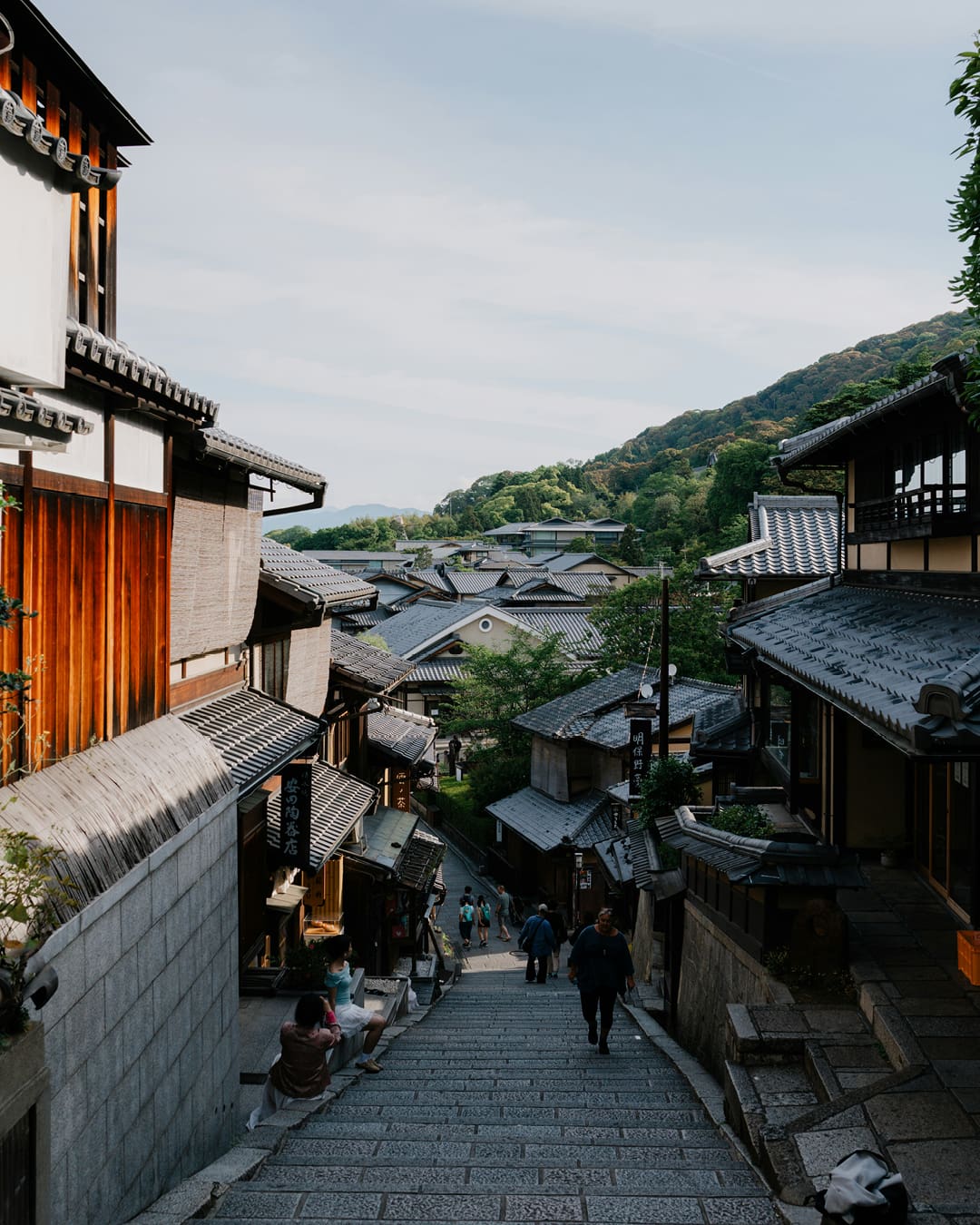
Founded as Heian in 794, Kyoto reigned as Japan’s imperial capital for over a millennium. While Tokyo now holds the reins of government, Kyoto remains the cultural heart of Japan. It’s the crucible of the country’s traditional arts and crafts, from the drama of kabuki theatre to the art of silk weaving and the refinement of kaiseki cuisine – all meticulously preserved by generations of artisans.
With its awe-inspiring temples, meticulously manicured gardens, hushed tearooms and maiko (geisha-in-training) gliding along lantern-lit alleyways, Kyoto unfolds like a living, breathing woodblock painting. Yet beneath this picturesque veneer pulses a vibrant, modern metropolis. Here, artists and entrepreneurs are building a bridge between the past and present, while a recent influx of international influences adds a cosmopolitan edge to the city’s ancient soul.
From sleek concept stores showcasing contemporary design to restaurants combining local ingredients with global flavours, Kyoto is embracing change without losing its identity. Boutique lodgings offer unique stays within centuries-old machiya townhouses, while new luxury hotels designed by contemporary architects cater to the needs of the modern traveller.
The city’s compact layout comprises a mosaic of storied neighbourhoods, each with its own ambience and charms, offering visitors an array of experiences. Below is an overview of the city’s five main districts, followed by our picks for the best places to eat, drink, shop and stay.
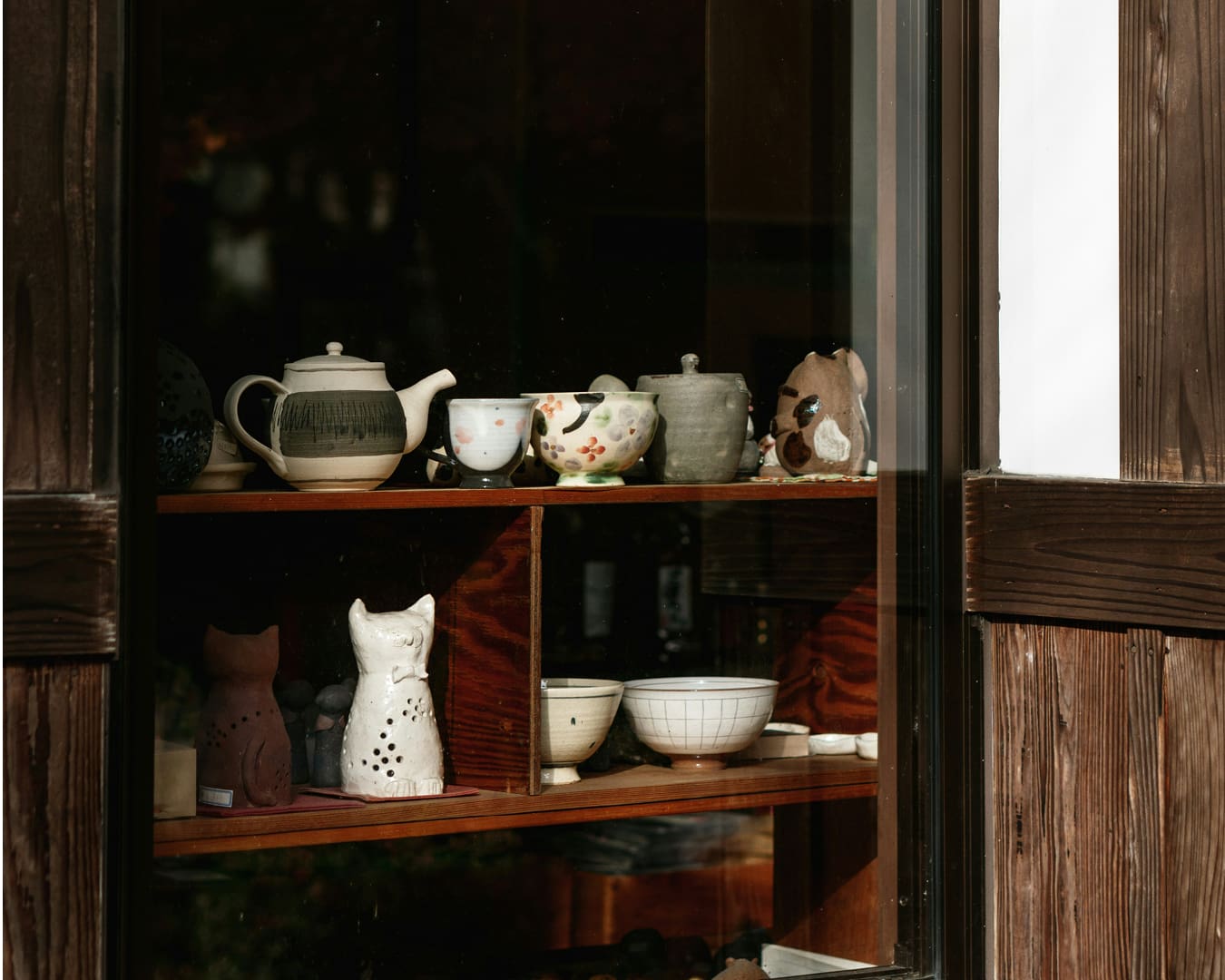
A neighbourhood guide to Kyoto
Higashiyama
Nestled in Kyoto’s eastern foothills, the beautifully preserved district of Higashiyama offers a glimpse of feudal Japan. This area is home to some of Kyoto’s most revered temples, including Kodai-ji and Kiyomizu-dera, a UNESCO World Heritage site famed for its wooden terrace and city views. The atmospheric Ninenzaka and Sannenzaka slopes past traditional machiya-style wooden townhouses containing craft shops and cafes. Higashiyama is best explored on foot: for a poetic experience, stroll the nearby Philosopher’s Path connecting Nanzen-ji and Ginkaku-ji (Silver Pavilion). Visit early to avoid crowds and don’t miss Shoren-in Temple for its exquisite gardens.
Gion
Gion, Kyoto’s famous geisha district, exudes an air of mystery and refinement. Its main street, Hanami-koji, is lined with historic ochaya (teahouses) and ryotei (high-end restaurants) where geiko and maiko entertain. The area comes alive at dusk when lanterns illuminate the streets. At its eastern edge, Yasaka Shrine is an iconic landmark, especially during the exciting Gion Matsuri festival held every July. For a glimpse of geisha, try early evening around Shinbashi-dori. Remember to be respectful if you spot a geiko or maiko: no photos without permission.
Central and Downtown Kyoto
The heart of Kyoto is a mix of historic grandeur and urban vitality. In Central Kyoto, the majestic Imperial Palace, surrounded by tranquil gardens, recalls the city’s royal past, while Nijo-jo, one of Kyoto’s most impressive sights, showcases the power Shoguns held over emperors during the Edo Period. Moving south, the area transitions into the vibrant downtown district centred around the covered shopping arcades of Teramachi and Shinkyogoku streets. Dubbed “Kyoto’s Kitchen”, Nishiki Market sells everything from knives and ceramics to regional specialties. Nearby, Pontocho alley offers atmospheric dining, while Kiyamachi Street pulses with nightlife.
Arashiyama
Tucked along the base of the “Storm Mountains” in western Kyoto, Arashiyama offers a blend of natural beauty and cultural sites. While the main street and famed Togetsu-kyo Bridge can be crowded, tranquillity awaits in nearby areas. The gorgeously landscaped Tenryu-ji Temple features a garden designed by Zen master Muso Soseki. For a peaceful retreat, head to Kameyama-koen Park upriver, or explore the lush moss garden in Saiho-ji. Despite being a 30-minute journey from central Kyoto, Arashiyama’s stunning scenery and awe-inspiring bamboo grove make it a must-visit destination.
Fushimi
Dominated by the iconic Fushimi Inari Shrine with its thousands of vermilion torii gates, Fushimi offers more than just Instagram-worthy shots. This leafy southern district, once a major transportation hub between Kyoto and Osaka, is crisscrossed by canals and renowned for its fushimizu – soft spring water perfect for sake brewing. Since the 16th century, Fushimi has been a sake production powerhouse. Today, it’s home to major producers like Gekkeikan and small brewpubs such as Fujioka Shuzo, where visitors can glimpse fermenting tanks of Soukou sake behind the bar.
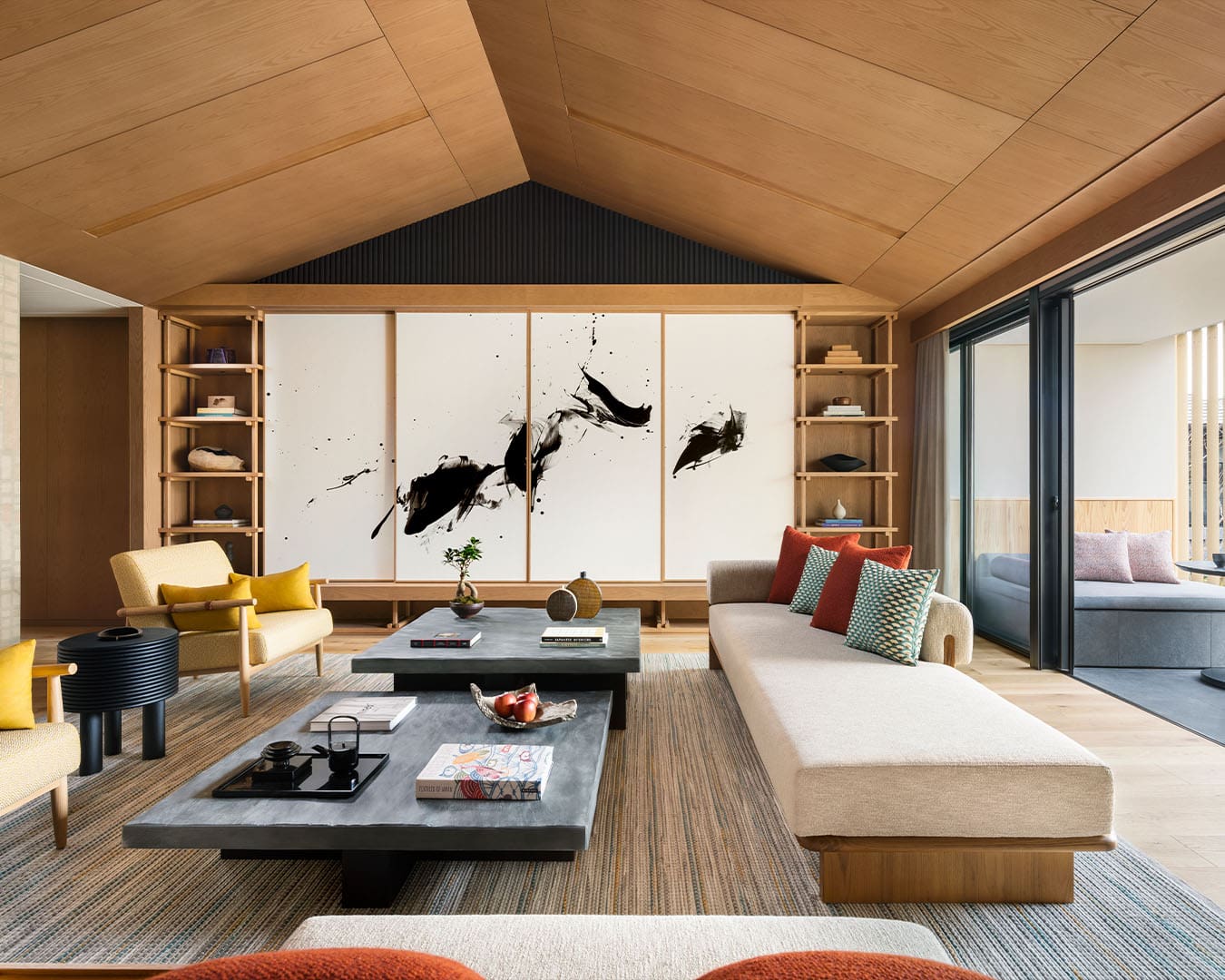
The best hotels in Kyoto
Six Senses Kyoto
Best for: Wellness-focused luxury retreat
Location: 431 Myohoin Maekawacho, Higashiyama Ward, Kyoto, 605-0932
Price: Rooms from 170,000 JPY / 1165 USD
A soothing oasis in Higashiyama, Six Senses brings eco-conscious, wellness-focused luxury to its Japan debut. Inspired by the culturally rich Heian period (794 – 1185), the wood-scented interior showcases natural materials and soft curves. Examples of Japanese craftsmanship can be found throughout the property: a wall-length ceramic screen comprised of handmade raku-yaki tiles stands in the open-air lobby, while playful motifs such as the mischievous rabbits, frogs, and foxes depicted in the 13th-century Choju-Giga scroll add touches of whimsy to the corridors and guest rooms. The spa, which features a serene public bath and sauna rooms, provides Zen-themed treatments and biohacking therapies to complement a host of exercise classes available in the fitness area. The Earth Lab offers classes centred on sustainability, and the Grow with Six Senses plastic-free play space is ideal for families with young children. With holistic wellness approaches and locally sourced cuisine at all-day dining Sekki, Six Senses Kyoto perfectly balances luxury, culture, and mindfulness, making it one of the finest fitness retreats in the world.

Maana Kiyomizu
Best for: Modern luxury in a historic setting
Location: 427-18, Myohoin Maekawacho, Higashiyama Ward, Kyoto, 605-0932
Price: Rooms from 70,000 JPY / 480 USD
Situated near Kiyomizu Temple, Maana Kiyomizu offers a contemporary twist on traditional Japanese accommodation. The property, part of a group of renovated historic dwellings, features three stylish suites showcasing exquisite craftsmanship. The interiors are fitted with washi-paper walls, hand-woven bamboo latticework, and deep ceramic tubs. Co-founders Hana Tsukamoto and Irene Chang have masterfully blended Japanese sensibility with international flair, creating a unique visual language. The complex also houses Kissa Kisshin cafe, serving Western-style breakfasts and sweets, and POJ Studio, where guests can learn the art of kintsugi (repairing ceramics with gold leaf). With its timber structure and stunning renovation by local architects Shigenori Uoya and Takeshi Ikei, Maana Homes provides an immersion in the subtle beauty of Japanese design.
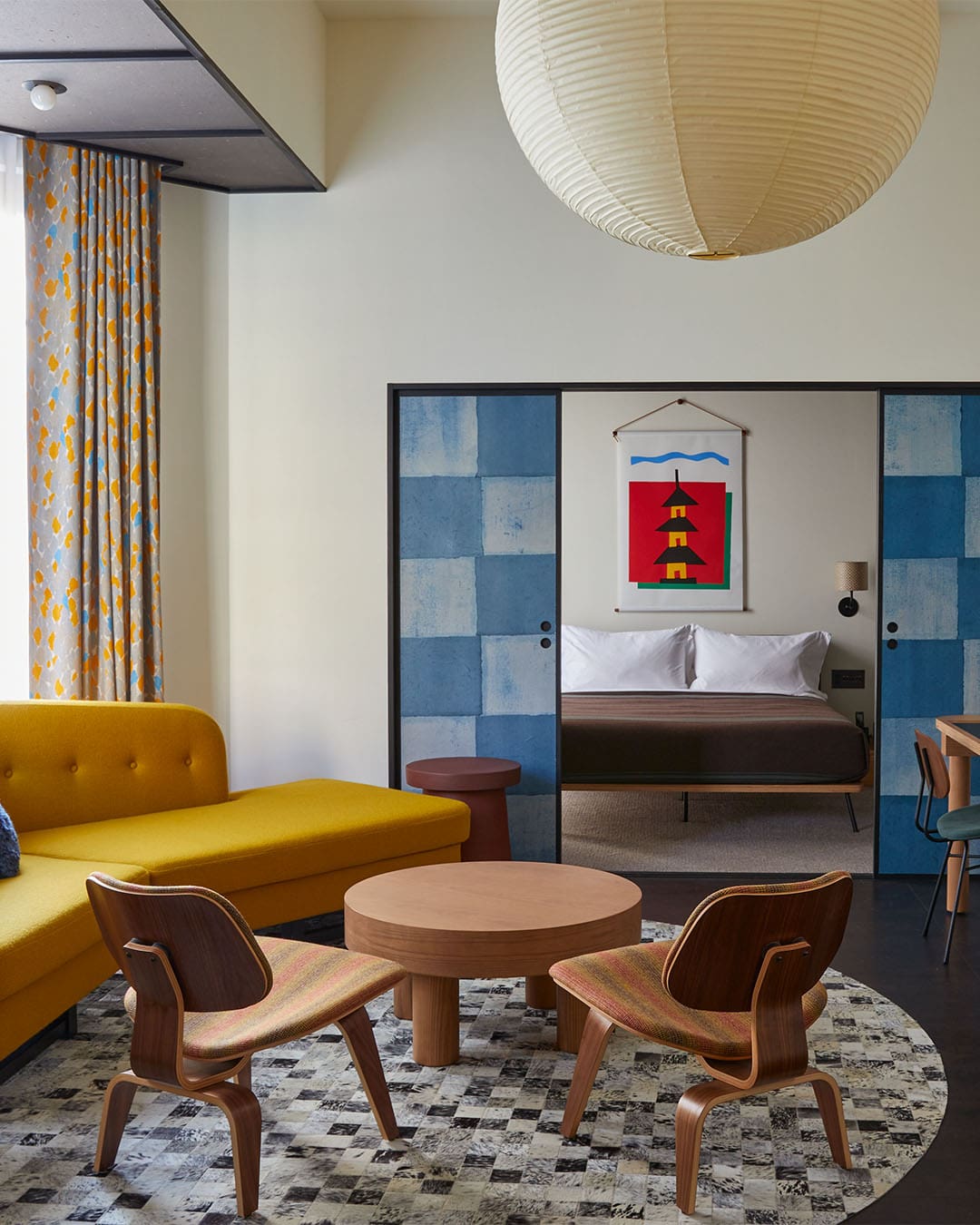
Ace Hotel Kyoto
Best for: Artsy hub with eclectic dining
Location: 245-2 Kurumayacho, Nakagyo Ward, Kyoto, 604-8185
Price: Rooms from 40,000 JPY / 274 USD
Ace Hotel Kyoto blends modern design with historic charm. Occupying the 1926 ShinPuhKan building alongside a new structure designed by Kengo Kuma, the hotel features a striking gridded facade on Karasuma Street. The art-filled lobby serves as a creative hub populated by hipsters sipping Stumptown coffee. Rooms boast a mix of Japanese elements and 1960s Americana, complete with record players and a curated selection of vintage vinyl. Dining options include Mexican at Piopiko (by LA’s Wes Avila), California fusion at Kosa, and Italian at Mr. Maurice’s, where breakfast on the third-floor terrace overlooking the courtyard garden is a treat. This artsy haven, a collaboration between Atelier Ace, architect Kengo Kuma, and Commune Design, showcases local craftsmanship throughout. Pets are welcome to stay for an additional 14,000 JPY.
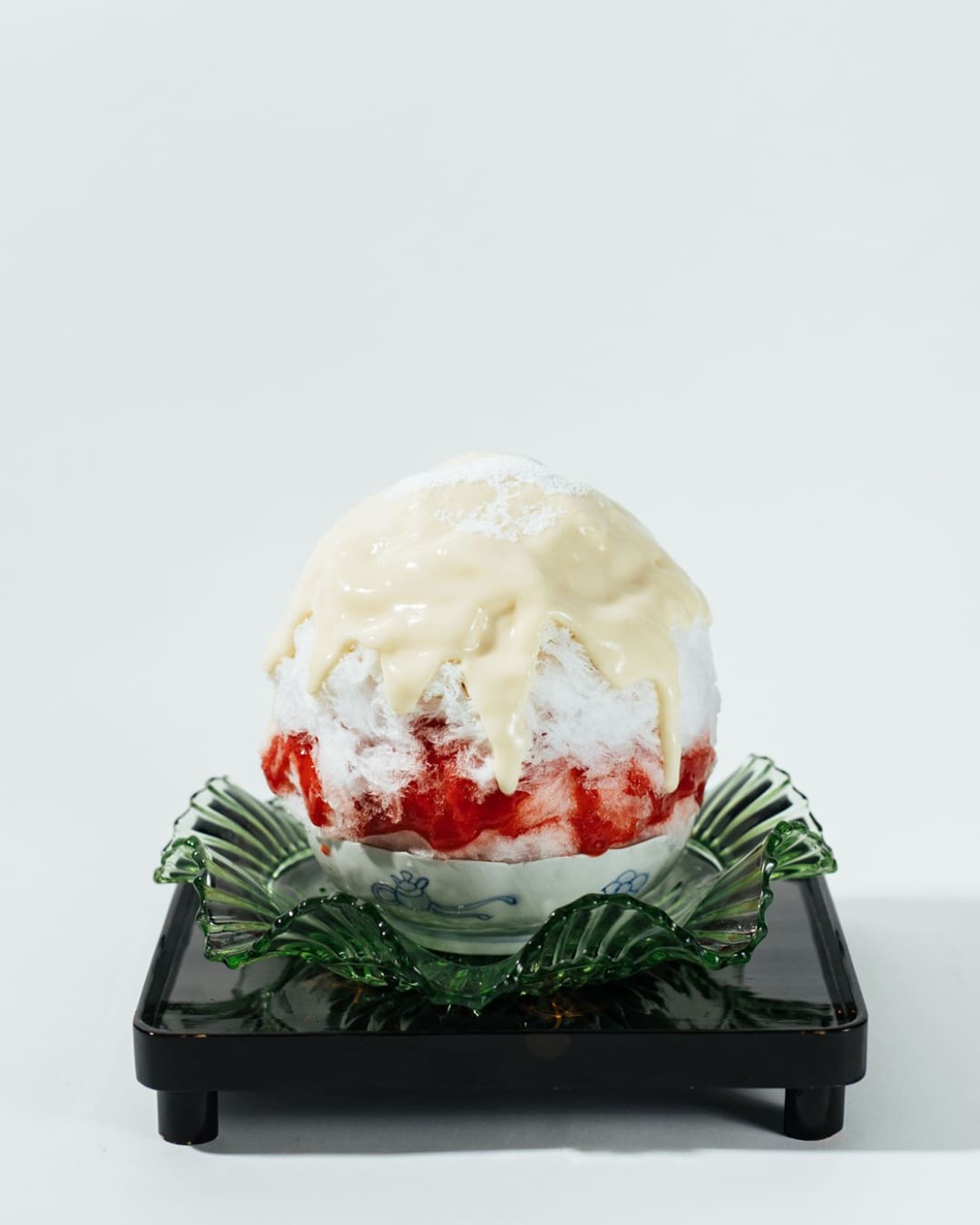
The best coffee shops and cafes in Kyoto
Tea and Sake Tasuki, ShinPuhKan
Best for: Grown-up shaved ice
Location: 586-2 Banocho, Nakagyo Ward, Kyoto, 604-8172
Price: Drinks from 600 JPY / 4 USD; kakigori from 1,300 JPY / 9 USD
Behind Ace Hotel, Tasuki ShinPuhKan offers a modern twist on kakigori. This sleek cafe, with its minimalist interior and high ceilings, serves sophisticated takes on traditional shaved ice featuring local Kyoto ingredients, tea, and spirits. Signatures include sencha green tea with lime and a grown-up version of the confection spiked with gin (1,300 JPY each), while the seasonal menu features treats like refreshing grapefruit yoghurt kakigori (1,500 JPY). The shop also serves craft beer from Kyoto.
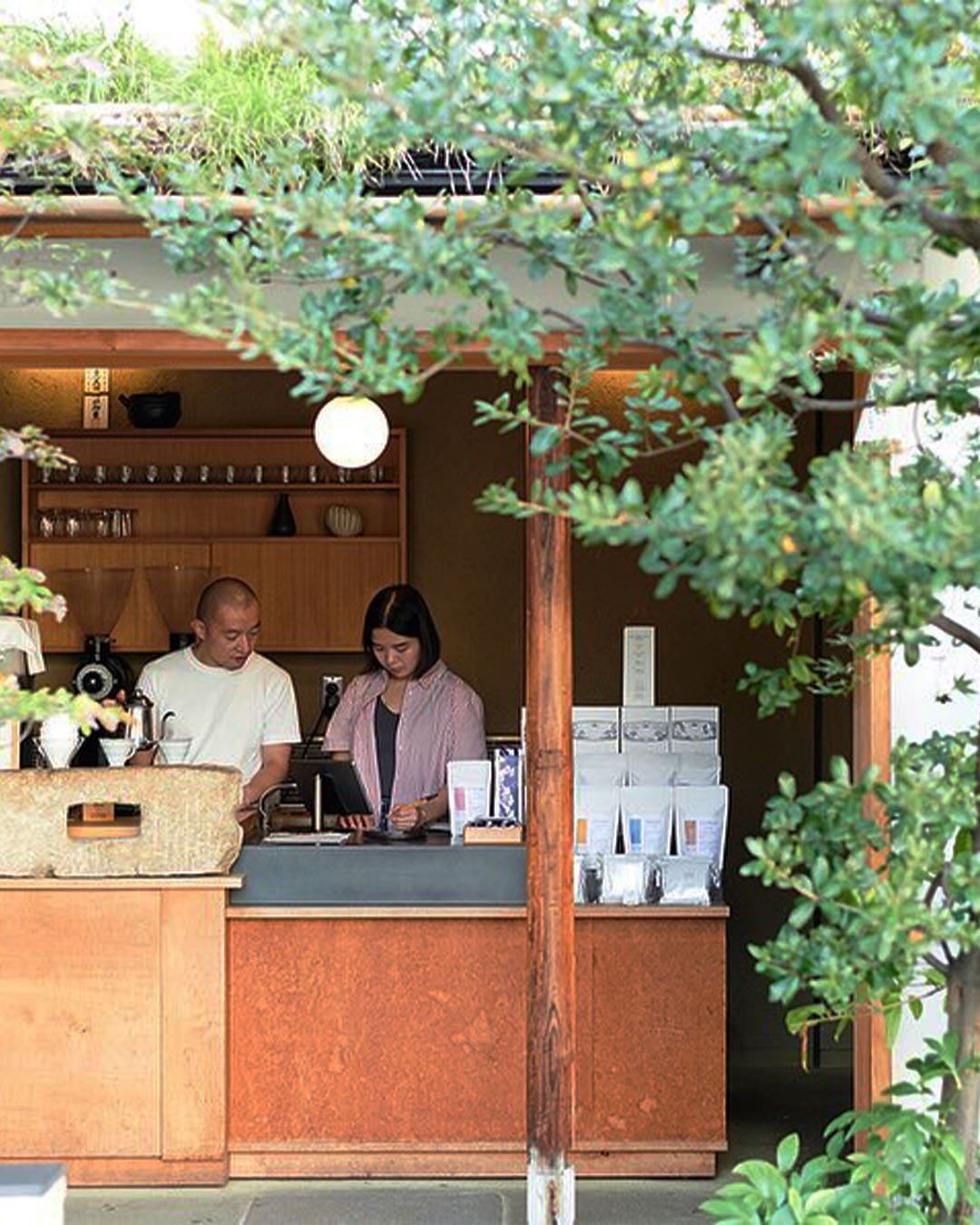
Weekenders Coffee
Best for: Pioneering parking lot cafe
Location: 560 Honeyanocho, Nakagyo Ward, Kyoto, 604-8064
Price: Drinks from 510 JPY / 3.50 USD
A pioneer in Kyoto’s third-wave coffee scene, Weekenders Coffee’s charming stand is secreted away in a parking lot. This tiny wooden building offers a menu of single-origin coffees and house blends. Seating is limited to a single covered wooden bench situated beside a small moss garden – emphasising its grab-and-go nature. Enjoy expertly crafted espresso drinks (510 JPY) or pour-over options. Choose between dark roast or light roast for a personalised coffee experience.
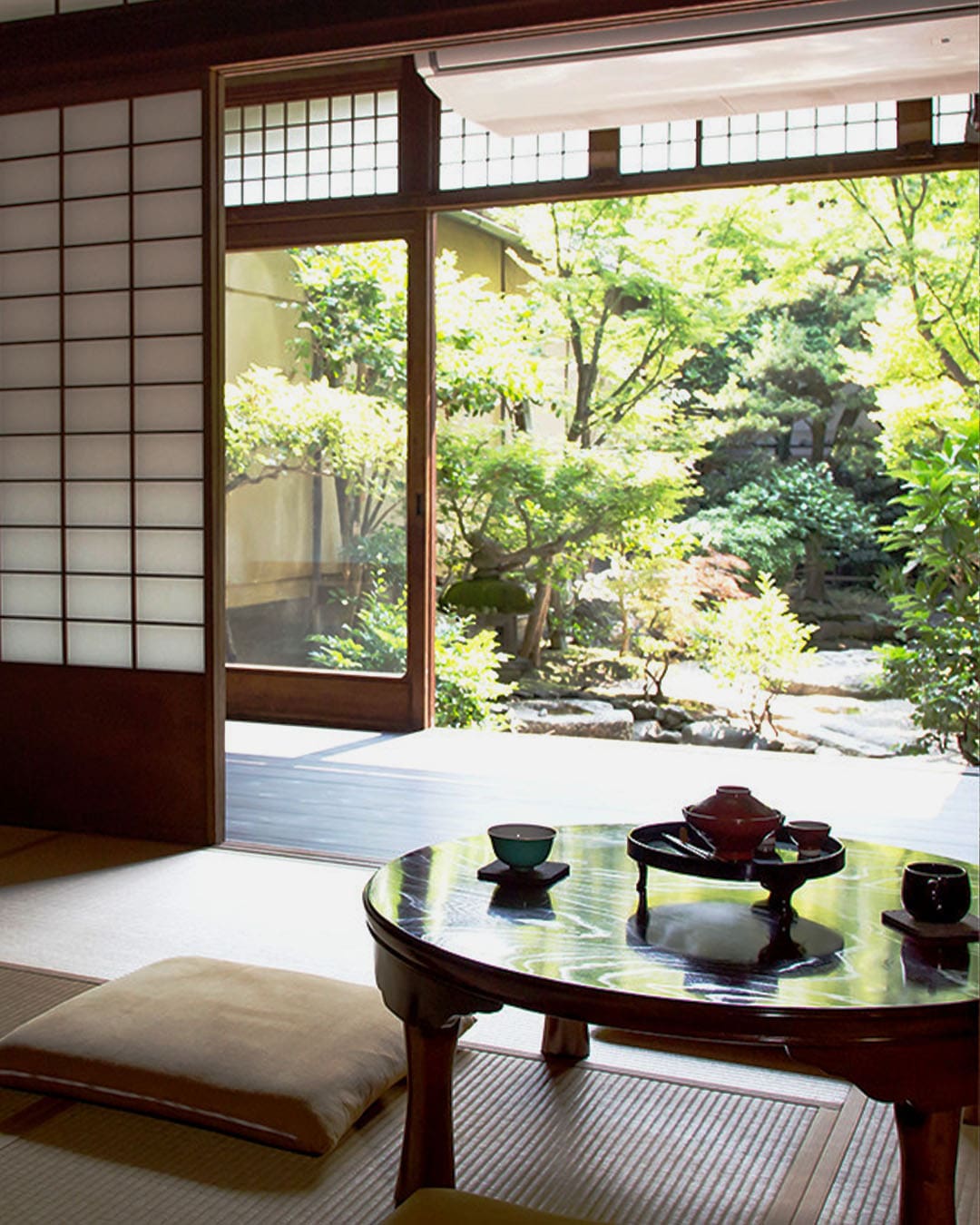
The Terminal Kyoto
Best for: Restored machiya cultural hub
Location: 424 Shinmachi-dori Iwatoyamacho, Shimogyo Ward, Kyoto, 600-8445
Price: Drinks from 1000 JPY / 6.9 USD
Housed in a lovingly restored early Showa-era (1926-1989) machiya (a traditional wooden townhouse), The Terminal is a mixed-use space born from a desire to preserve Kyoto’s townhouses. This carefully renovated building retains original features like exposed beams and earthen walls, while incorporating modern elements. The space now hosts a gallery, cafe, and shop, showcasing contemporary crafts like handmade wooden cups and pottery. Browse artisanal goods, then enjoy a peaceful moment with the cafe’s signature Basque cheesecake overlooking the tsuboniwa – a small, enclosed garden typical of traditional Kyoto homes.
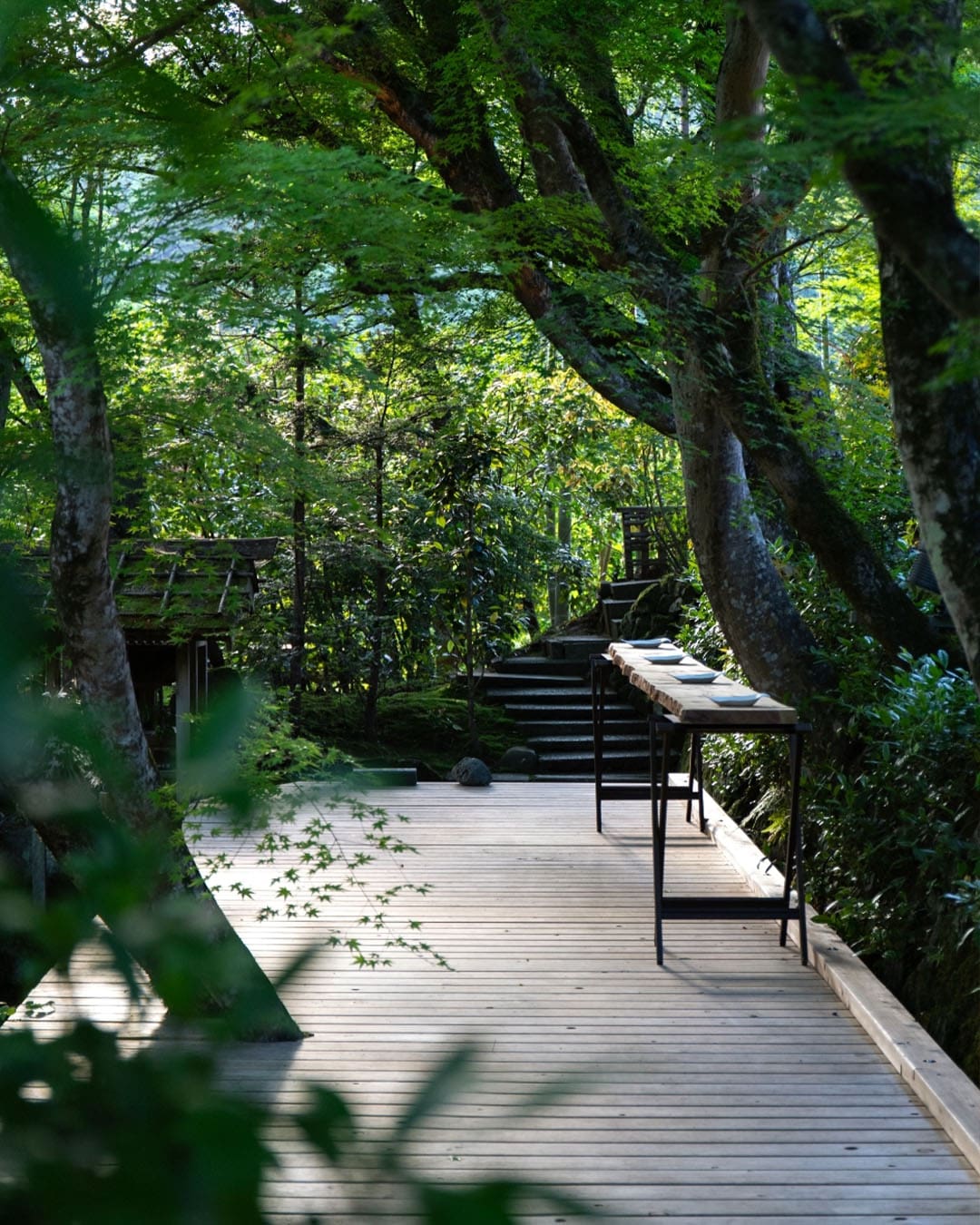
The best places to eat in Kyoto
Chef’s Table by Katsuhito Inoue
Best for: Intimate seasonal tasting menu
Location: 543 Hokodencho, Nakagyo Ward, Kyoto, 604-0902
Price: Tasting menu 35,000 JPY / 240 USD
Chef’s Table, secluded within the Ritz-Carlton Kyoto’s main restaurant Locanda, seats just six guests at a single table, adorned with a living tableau of moss and foliage assembled daily by the hotel’s gardener. The table sits before a small open kitchen where chefs prepare dishes a la minute. Guests embark on a culinary journey through an ever-changing tasting menu inspired by Japan’s 72 micro seasons. Chef Katsuhito Inoue blends Japanese and international techniques, crafting inventive dishes like deep-fried ayu sweetfish with begonia mousse or handmade noodles with squid and caviar. His zero-waste approach utilises every part of an ingredient, resulting in visually striking creations that push the boundaries of Kyoto’s culinary traditions. Please note that Chefs’ Table is open for dinner only.
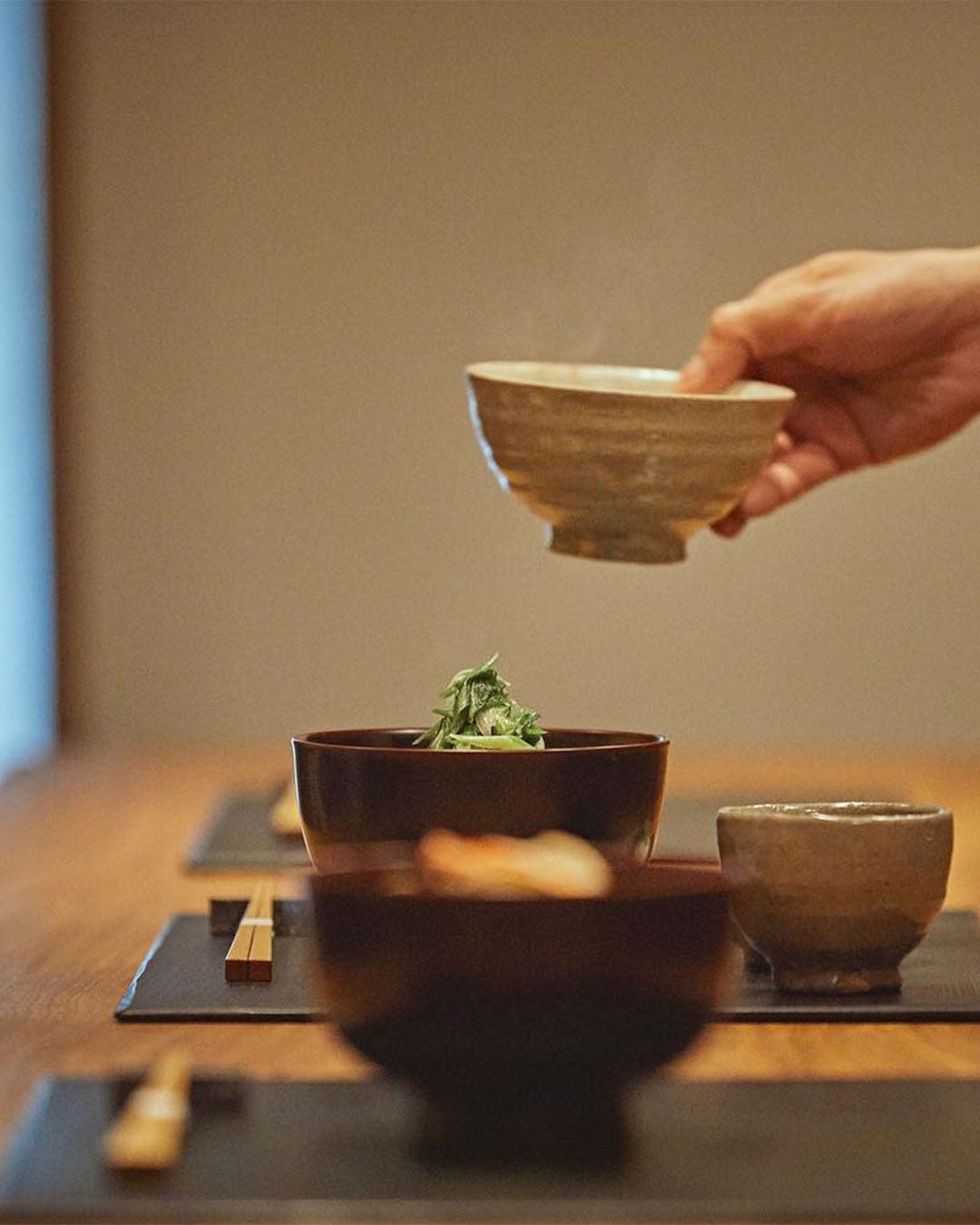
Choshoku Kishin
Best for: Artisanal breakfast tasting
Location: 555 Komatsucho, Higashiyama Ward, Kyoto, 605-0811
Price: Tasting menu 3,300 JPY / 22.60 USD
At Choshoku Kishin, breakfast is an art form. This Bib Gourmand-awarded spot in Gion serves only a 3,300 JPY tasting menu, drawing inspiration from tea ceremony traditions. The centrepiece is rice, served in stages from just-steamed to fully cooked, allowing diners to appreciate its subtly changing flavours. Guests select from an array of soups, with the tonjiru (Kyoto white miso, pork, and seasonal vegetables) option being a standout. Accompaniments like whole dried herring, kissed with flame, and house-made pickles add depth. Sourcing from Kyoto and Kamakura, Kishin crafts a morning meal that’s both comforting and elevated. Breakfast only.
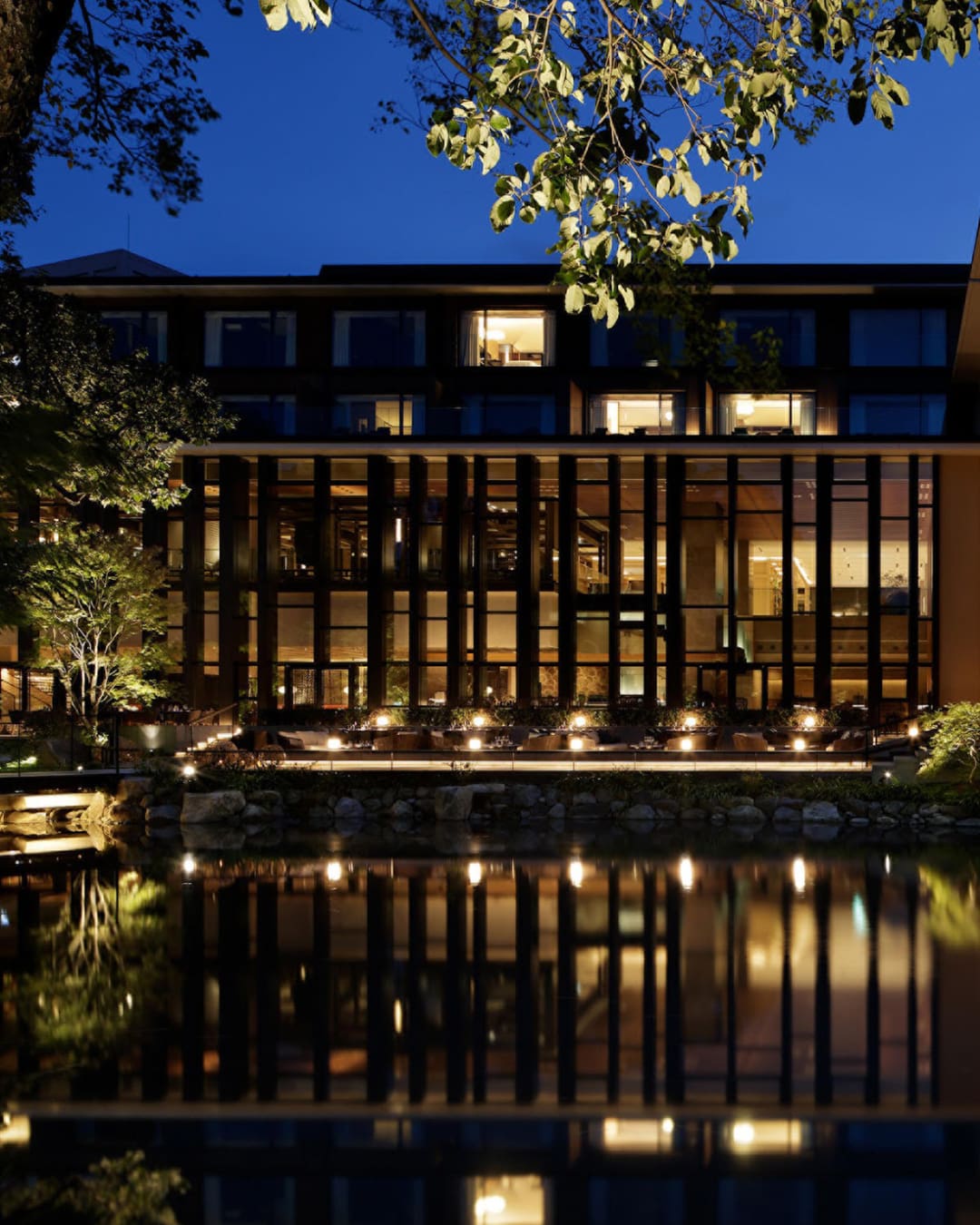
Emba
Best for: Refined Kyoto chophouse
Location: 445-3 Myohoin Maekawacho, Higashiyama Ward, Kyoto, 605-0932
Price: Mains from 6,000 JPY / 41 USD
Emba, a modern Kyoto “chophouse,” offers a relaxed and family-friendly space where grilling takes centre stage. The a la carte menu features delectable seafood like tuna tartare with seasonal Japanese citrus confit and avocado, and crispy-scaled amadai bream with shiso pesto. The generous portions are ideal for sharing. Vegetarians aren’t forgotten, with dishes such as sesame-crusted charcoal-grilled cauliflower and tofu and corn brulee keeping things interesting. However, expertly grilled meat is the star: succulent akaushi tenderloin with roasted kyoyasai local vegetables exemplifies Emba’s comforting flavours with Kyoto-inspired touches. For a surcharge (from 2,000 JPY for non-staying guests), dine on the terrace overlooking the glorious 1000-metre Japanese garden: this 800-year-old oasis, replete with carp-filled ponds and a shrine, truly elevates the dining experience.
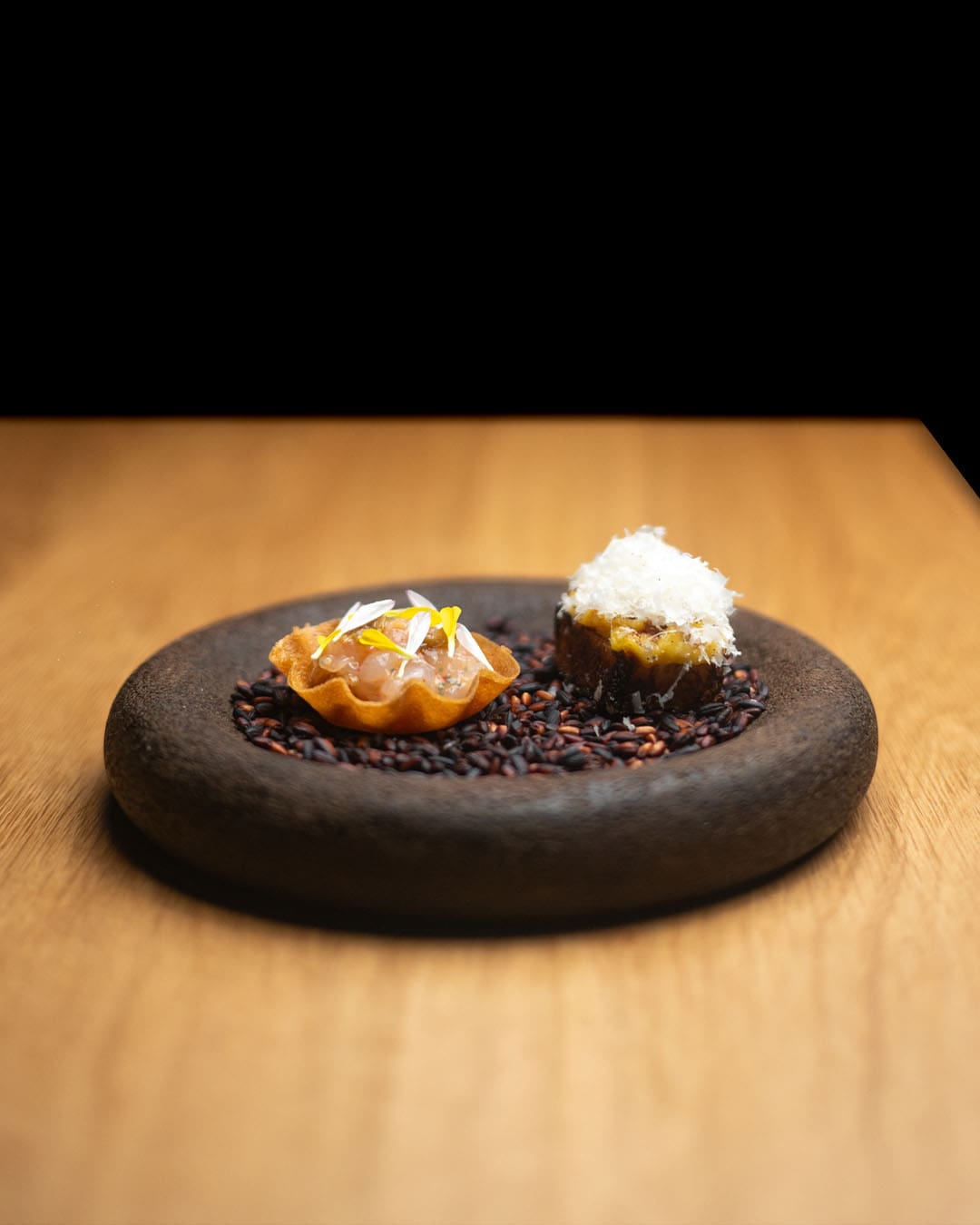
Moko
Best for: French finesse
Location: 235-2 Tamauecho, Nakagyo Ward, Kyoto, 604-0005
Price: Wine pairing 6,000 JPY / 41 USD; tasting lunch menu 8,250 JPY / 56 USD; dinner 16,500 JPY / 113 USD
Michelin-starred Moko, a recent addition to Kyoto’s dining scene, is the brainchild of husband-wife team Alexis and Ayaka Moko. This French fine-dining restaurant, welcoming to families with kids, occupies a beautifully refurbished two-story building complete with a small garden and traditional kura storehouse. Chef Alexis has a winning way with seafood and vegetables, incorporating bracing acidity and warm spices like cumin and cardamom in equal measure. The seasonal tasting menu might feature roasted aged sea bass from Awaji island, filled with sea bass-and-herb mousse and accompanied by courgettes with butter foam, or tender Kumamoto beef with aubergine puree and black garlic. Freshly baked bread is perfect for mopping up the sauces.

Washoku Haru
Best for: Elevated izakaya-style dining
Location: 230-2 Shinmeicho, Shimogyo Ward, Kyoto, 600-8092
Price: Drinks from 990 JPY / 6.7 USD; tasting menu 9,900 JPY / 67 USD
Washoku Haru occupies an intimate space in downtown Kyoto, its atmosphere and cuisine straddling the line between izakaya and casual fine dining. Chef Harutoshi Kitsukawa trained at kaiseki restaurant Wakuden and his restrained approach honours Kyoto’s tradition of gentle flavours, showcasing local, seasonal ingredients. Signature dishes include an elegant cream-enriched potato salad and Kyoto-style mackerel sushi wrapped in seaweed. The 9,900 JPY tasting menu, available via online reservation only, raises traditional Japanese comfort food to Bib Gourmand-worthy status. Diners can watch the chef at work while enjoying sake, beer, or wine by the glass.

Japanese Mazemen Maruta
Best for: Innovative Kyoto-inspired mazemen
Location: 338 2 Takashimacho, Kamigyo Ward, Kyoto, 602-0878
Price: Drinks from 980 JPY / 6.7 USD; noodles from 1,100 JPY / 7.5 USD
Maruta, helmed by Hiroshima native Shodai Wakano, delights noodle enthusiasts with its unique take on mazemen, a style of brothless ramen. Inspired by Kyoto’s culinary scene, Wakano creates bowls that showcase local ingredients and sensibilities. The restaurant’s specialty lies in its savoury secret sauce, designed to complement the aged noodles and enhanced by housemade aromatic oil. Served in textured ceramic bowls, the classic mazemen features ribbons of seared pork char siu (1,100 JPY). Customisation is encouraged, with add-ons like coriander or cheese available from 220 JPY. Seasonal specials shine, like chilled noodles tossed in white miso sauce and covered with thinly sliced fresh plum.
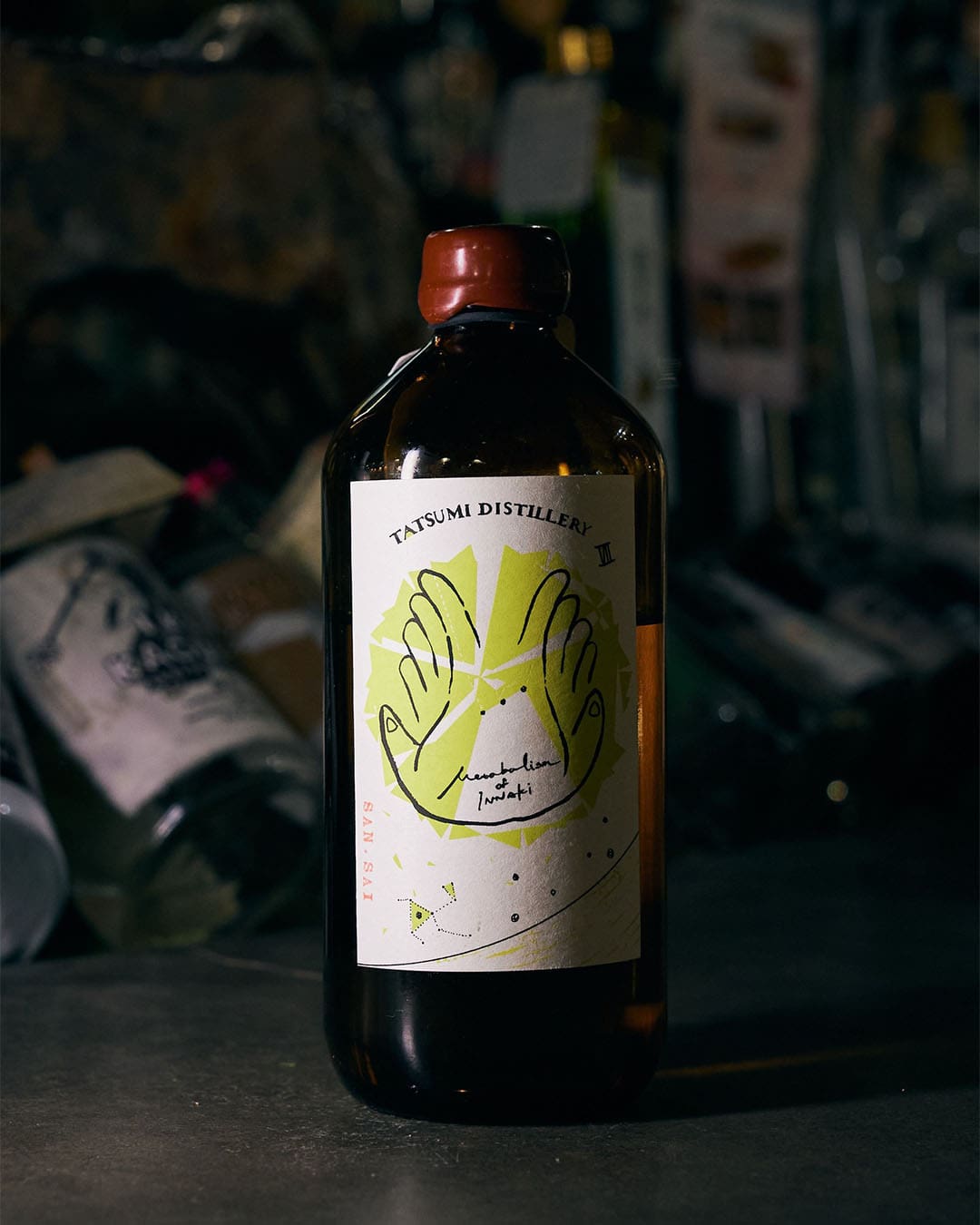
The best places to drink in Kyoto
The Roots of All Evil
Best for: Underground gin joint near Kyoto Station
Location: 721-1 Higashishiokojicho, Shimogyo Ward, Kyoto, 600-8216
Price: Drinks from 1,000 JPY / 6.8 USD
Across from Kyoto Station, this basement gem boasts over 100 craft gins, mostly Japanese. The matchbox-sized bar serves several Kyoto spirits and rare finds like seasonal elixirs from small-batch producer Tatsumi Distillery in Gifu Prefecture. Open year-round from 11am, it’s perfect for a cocktail before hopping on the bullet train. Gin and tonics start at 1,000 JPY, while original drinks like the earthy “Roots” – made with burdock and dandelion root-infused gin – begin at 1,200 JPY.
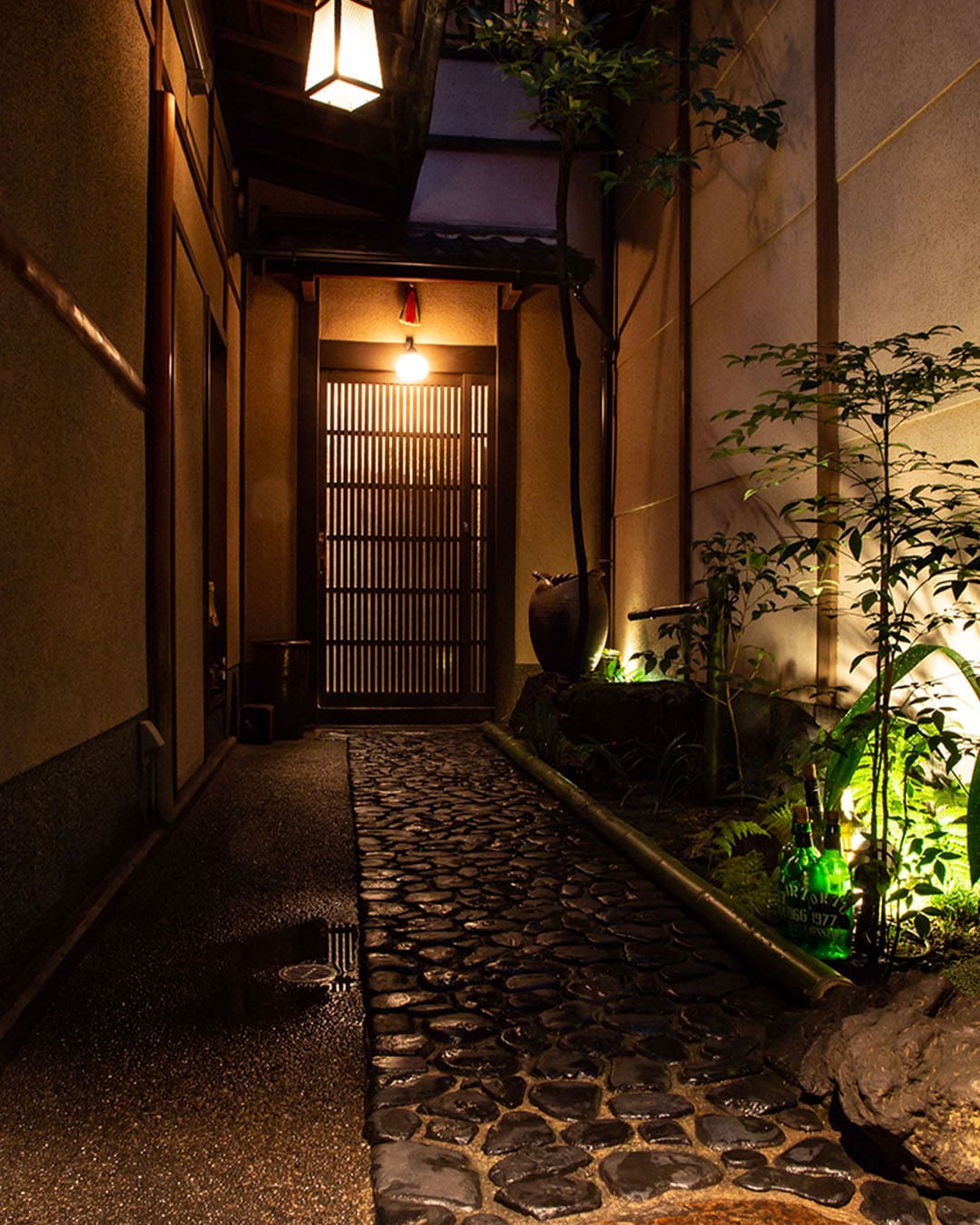
Rocking Chair
Best for: Bespoke cocktail hideaway
Location: 434-2 Tachibanacho, Shimogyo Ward, Kyoto, 600-8044
Price: Drinks from 1,540 JPY / 10.50 USD
Hidden in downtown Kyoto’s backstreets, Bar Rocking Chair occupies a 90-year-old renovated machiya. This intimate wood-panelled space accommodates around 30 guests, including four in namesake rocking chairs. Skilled bartenders in crisp attire craft bespoke cocktails based on patrons’ preferences – no menu needed. Kenji Tsubokura’s seasonal creations often feature local fruits, along with Kyoto-centric ingredients like green tea. The bar’s dim lighting and chilled-out atmosphere make it a perfect spot for quiet conversation. Note: guests are asked to keep voices lowered to maintain the calm.
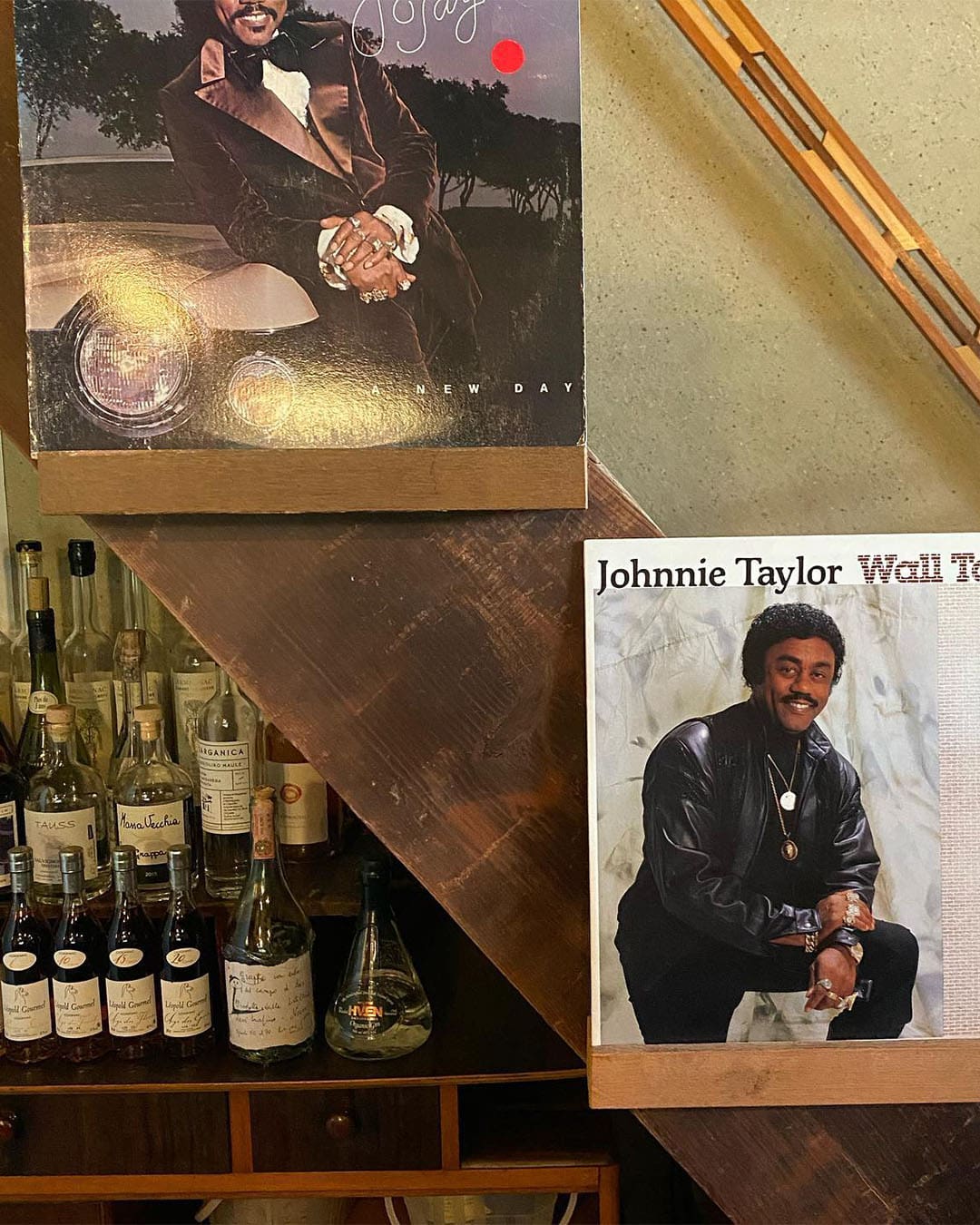
Dupree
Best for: Natural wine in a renovated home
Location: 68-1 Okazaki Nishitennocho, Sakyo Ward, Kyoto, 606-8341
Price: Drinks from 1,800 JPY / 12.3 USD; small plates from 1,000 JPY / 6.8 USD
Tucked in a renovated Japanese home, Dupree is a cosy haven for natural wine enthusiasts. Opened in 2018 by natural wine retailer Ethelvine, this warm-toned wine bar and restaurant features a turntable in the corner, wooden fixtures, and soft lighting. Guests can explore the cellar, choosing from an impressive collection of natural wines, each bottle price-tagged in white marker. Owner Masanobu Egami’s passion infuses every aspect of Dupree, from the extensive natural wine list to the small plates of French-inspired bistro fare like housemade charcuterie. The ever-changing offerings reflect seasonal flavours.

The best places to shop in Kyoto
Nishiki Market
Best for: Kyoto’s centuries-old kitchen
Location: 609 Nishidaimonji-cho, Nakagyo-ku, Kyoto-shi, Kyoto 604-8054
In the heart of downtown Kyoto, Nishiki Market is one of the city’s highlights. This covered pedestrian-only street has been a gastronomic hub since the 14th century, evolving from a wholesale fish market to a vibrant shopping paradise. Today, its narrow lanes brim with more than 100 stalls peddling local delicacies: wooden barrels filled with tsukemono pickles, artisanal teas, and crates of fresh seafood jostle for attention alongside modern treats like soymilk donuts. Amidst the food vendors, specialty shops such as Aritsugu sell artisanal chef knives and kitchen appliances. For the full Nishiki experience, arrive by 10am, when most of the stalls open, to watch as the market comes alive – a microcosm of Kyoto’s culinary soul. The market operates until 6pm but many shops close at 5pm.

Graphpaper
Best for: Minimal fashion meets tradition
Location: 88-1 Daikokucho, Nakagyo Ward, Kyoto, 604-8073
Graphpaper, directed by Tokyo-based creative visionary Takayuki Minami, melds tradition with modernity in Kyoto’s fashion landscape. Their first Kyoto store, opened in 2020, finds its home within a century-old machiya. The deep and narrow space typical of traditional townhouse architecture has been thoughtfully renovated, preserving original beams while embracing a minimalist white palette. Graphpaper’s clothing line echoes this contemporary wabi-sabi aesthetic, reimagining classic styles with premium fabrics, neatly tailored edges, and boxy silhouettes (think soft, oversized cardigans and wide denim trousers). The store features tatami-floored spaces, a serene miniature courtyard and a wonderfully maintained kura storehouse, repurposed as a gallery.

POJ Studio
Best for: Boutique craft showcase
Location: 427-19 Myohoin Maekawacho, Higashiyama Ward, Kyoto, 605-0932
POJ Studio (an acronym for Pieces of Japan) has evolved from an online platform to a brick-and-mortar showroom for Japanese craftsmanship. Located within the Maana Kiyomizu complex, the store highlights handmade items such as hinoki wood tableware, kiriko glassware and indigo tie-dye wall hangings. Shoppers will discover a well-curated selection of modern pieces by emerging artisans alongside antiques from the 18th and 19th centuries. Beyond retail, POJ offers hands-on workshops in kintsugi (the art of mending broken pottery with gold leaf), incense-making, and palm broom creation, available in English, French and Japanese.

Getting to and around Kyoto
From Tokyo station, Kyoto is an easy 2.5-hour Shinkansen ride away, but if you fly into Kansai International Airport, the Haruka Limited Express train will get you there in roughly an hour and 15 minutes.
Once in Kyoto, the city offers a number of convenient options for getting around. The extensive subway and train system is the most efficient way to navigate the city. While buses cover almost the entire area, they can be less convenient. For groups of three or four, taxis are plentiful and sometimes more economical than buses for short trips.
Cycling enthusiasts will appreciate Kyoto’s mostly flat terrain and considerate drivers, making bicycle rentals an excellent option for exploration. The city is also perfect for walking, especially in areas like downtown, Arashiyama and Higashiyama.

